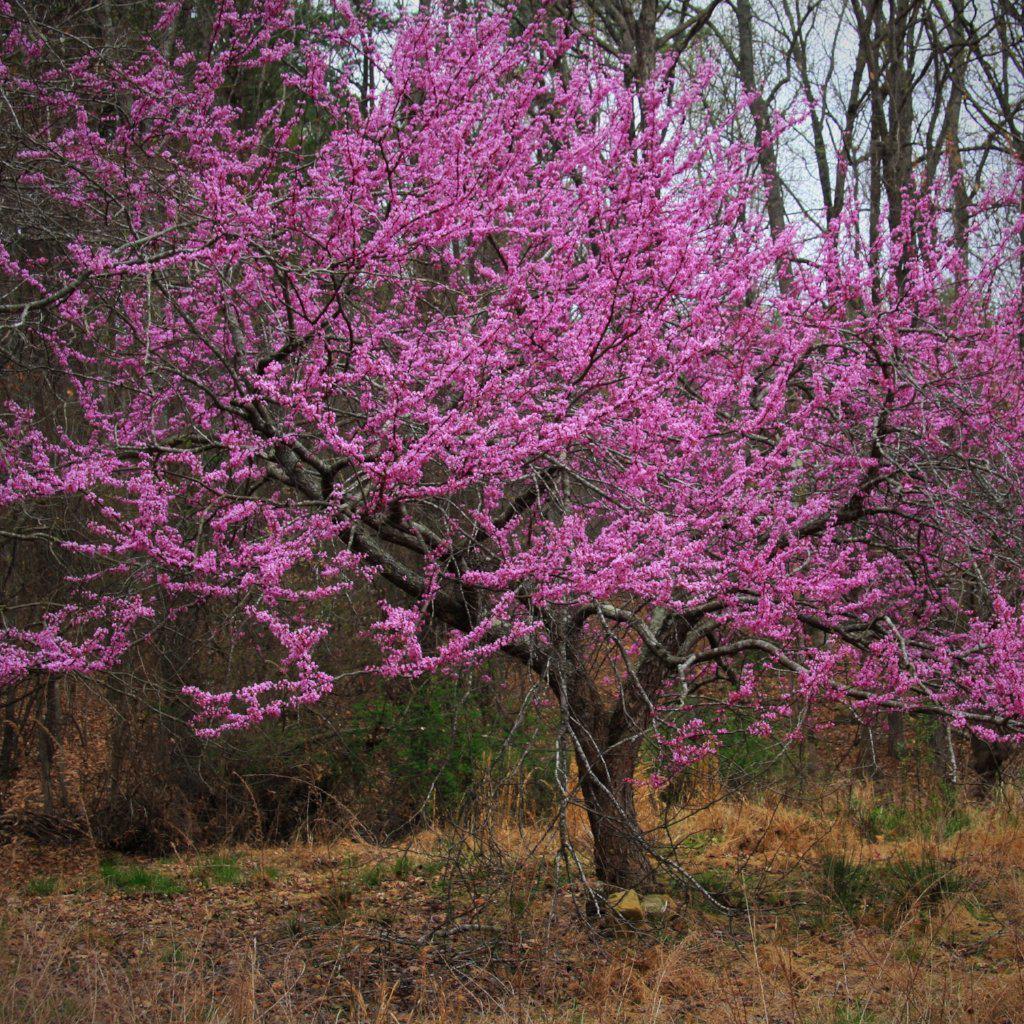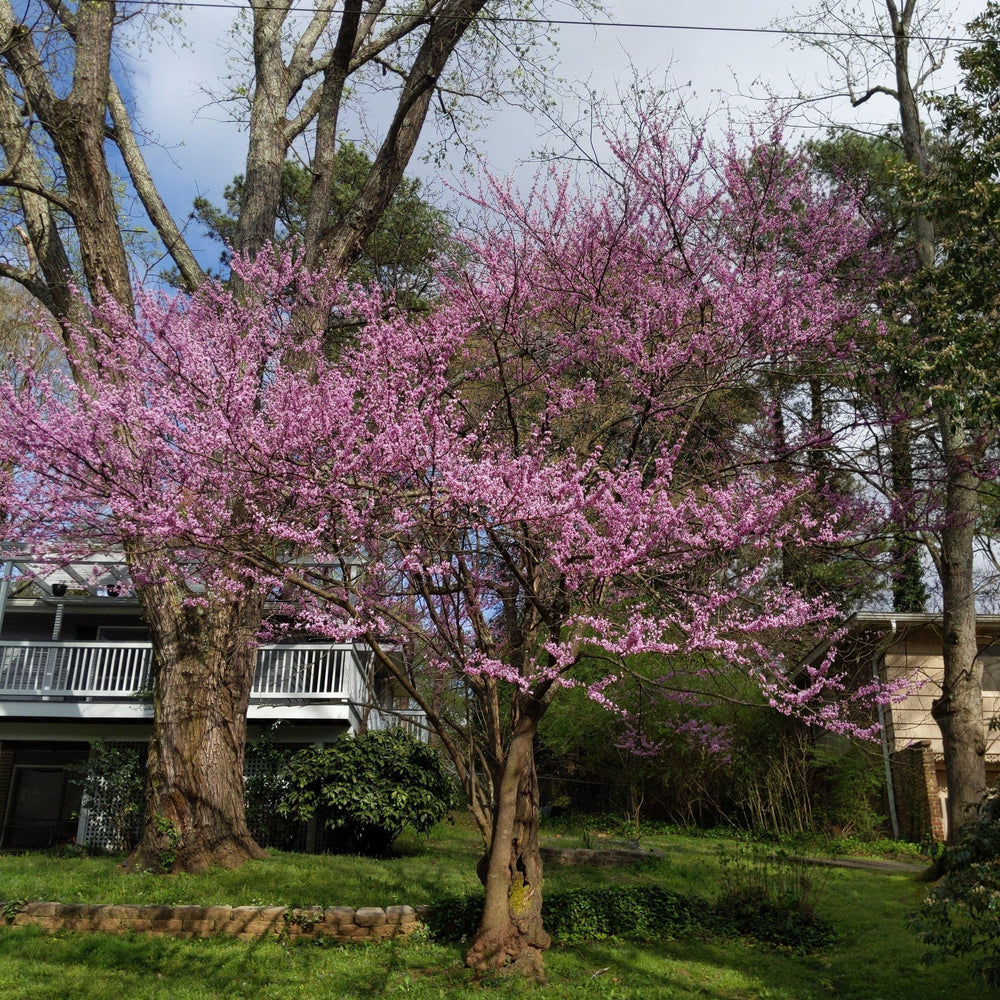Eastern Redbud
Cercis canadensis
- In stock, ready to ship
- Backordered, shipping soon
- Locally Grown
The Eastern Redbud typically grows to a height of 20 to 30 feet with a spread of 25 to 35 feet. It has a rounded to vase-shaped canopy and develops a multi-stemmed trunk. The heart-shaped leaves are medium green in color and turn yellow in the fall, adding a touch of autumn beauty to the landscape.
One of the most captivating features of the Eastern Redbud is its profusion of flowers. Clusters of small, pea-like flowers cover the branches in early spring, creating a breathtaking display. These flowers are not only visually appealing but also attract pollinators like bees and butterflies.
This Redbud variety thrives in full sun to partial shade and prefers well-drained soil. It is relatively low-maintenance and adapts well to various soil types. Regular watering during dry periods is beneficial, especially when the tree is young and establishing its root system.
|
Type: |
|
|
Origins: |
Eastern N. America; GA Native |
|
Height: |
20’ - 30’ |
|
Spread: |
25’ - 35’ |
|
Spacing: |
30’ |
|
USDA Hardiness Zone: |
5 - 9 |
|
Culture: |
|
|
Bloom Color: |
Purple |
|
Season of Interest: |
MAINTENANCE NEEDS: Low maintenance. Canker can be a significant disease problem. Various diseases and pests and be prevented with regular watering and pruning of dead branches. Does not transplant well, plant when young and leave undisturbed.
LANDSCAPE USES: Specimen or mass plantings, Borders, Naturalized Areas, Woodland Garden, Wildlife Gardens, Screening, Shade Tree, and Street Tree.
COMPANION PLANTS: Mahonia, Hydrangea, Witch Hazel
IMAGE: Dcrjsr, Cercis canadensis redbud tree bloom, CC BY 3.0
*As plants have ranges in appearance they may not appear as the images shown.
Hahira Nursery takes pride in growing high-quality, fresh, healthy plants and ensuring they are delivered safely, on time, and with little to no damage so they are ready to be planted.
Despite all of our best efforts, once the plants have left our nursery, there are many variables outside of our control that can cause plants, flowers, trees, shrubs, or grasses to not thrive as they should. Plants are living organisms and are susceptible to a number of different environmental and care factors that are outside of our control.
Our goal is to build strong relationships with our customers and we always want to make things right, but we cannot always guarantee what happens once the plants are outside of our nursery, how you care for the plants, if they’re in the correct growing zones, weather damage, soil conditions, insect infestations, etc..
If you have any questions or concerns about a purchase you’ve made, please email us at info@hahiranursery.com and we will work with you on a case-by-case basis to the best of our ability.
Please note that all living organisms are not identical and their coloring, size, and shapes may differ from what you see online in our store. Each plant has its own characteristics that are impacted by the time of year, growth cycle, weather, and other elements which will cause them to look different than their photos.







